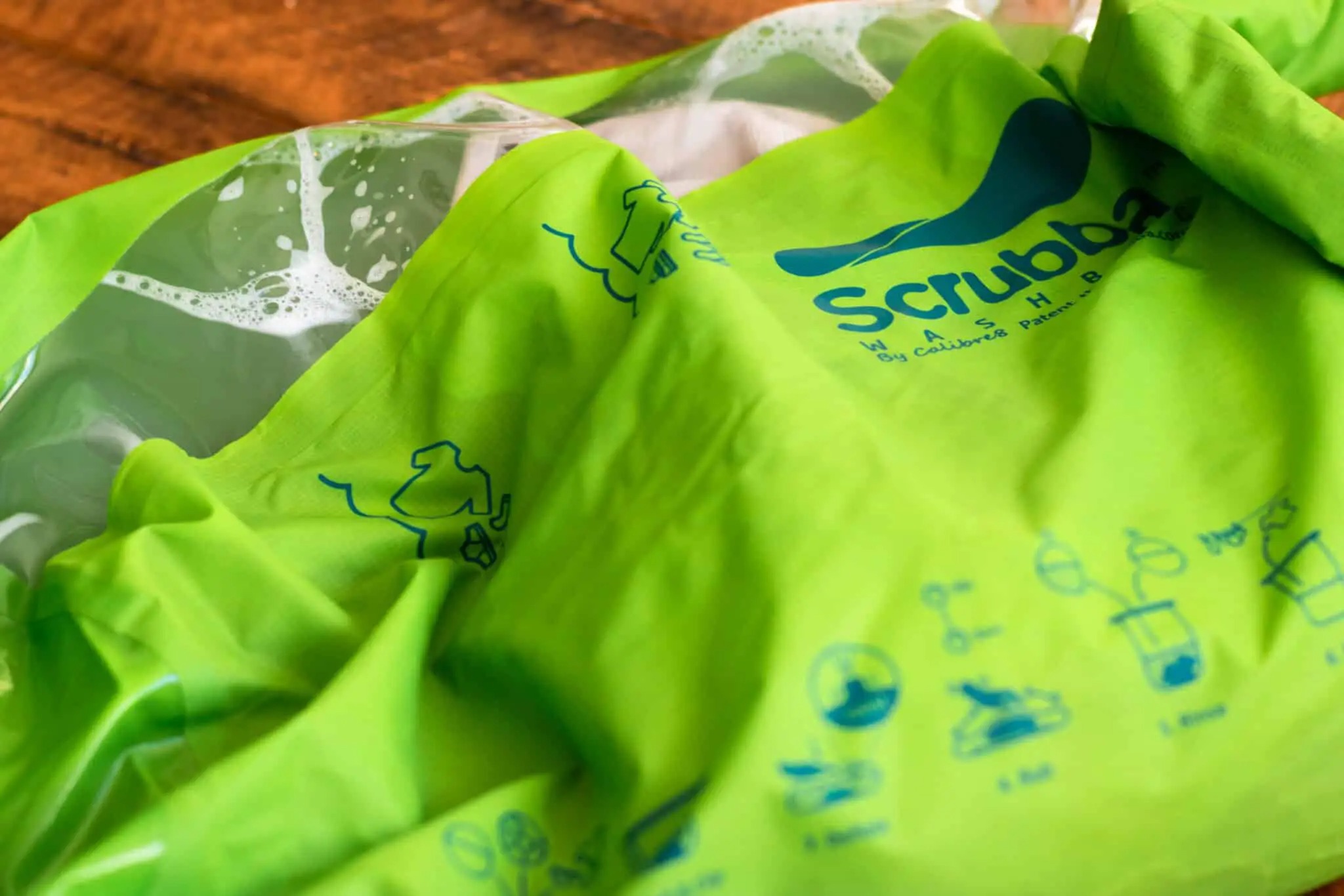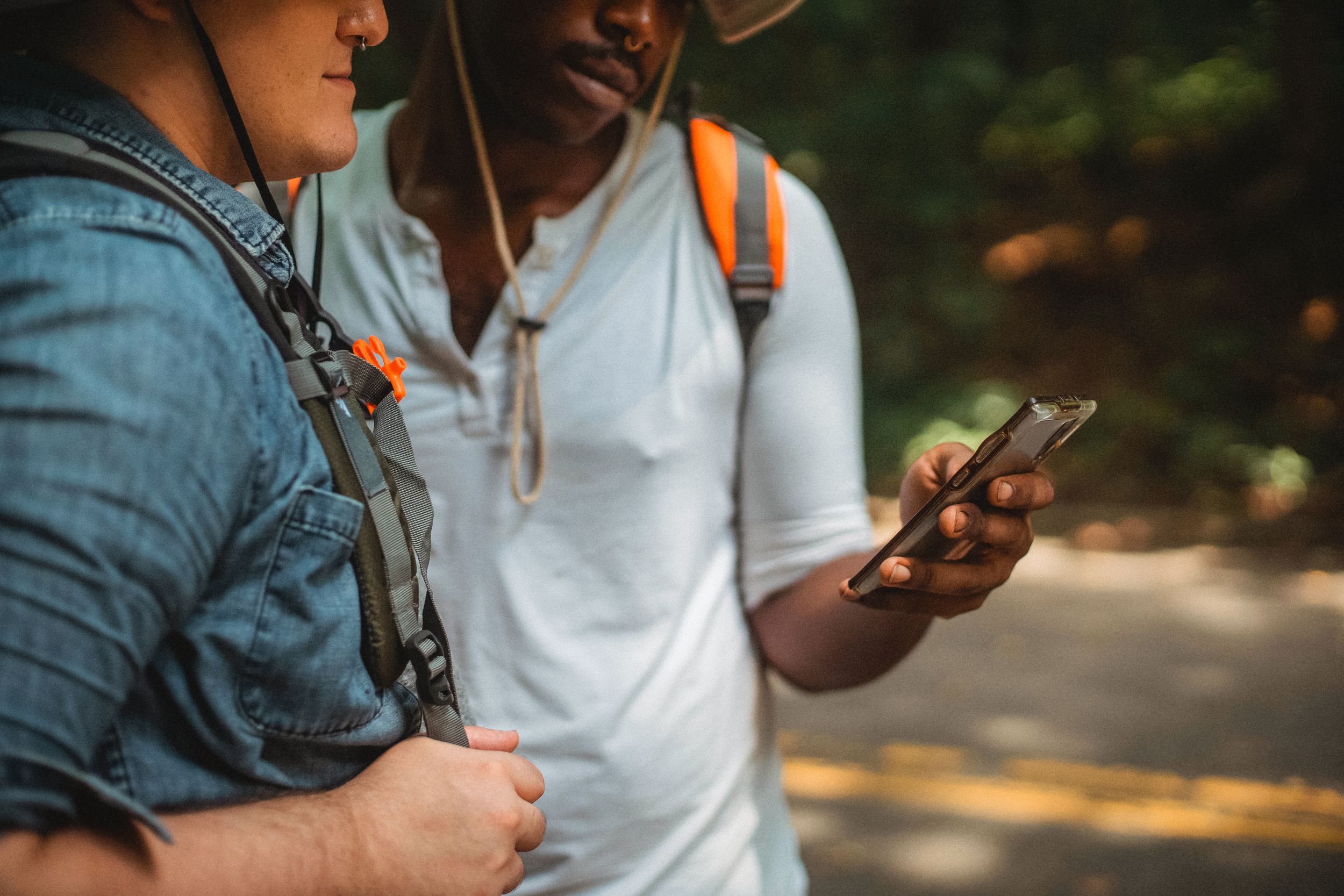How to Camp in the Rain: The Ultimate Guide of Tips, Tricks & Gear for Rainy Weather
Camping in the rain: an enjoyable outdoor experience or the last straw that’ll have you swearing off camping for all eternity?
I’ll be the first to admit that if you’re not prepared, camping in the rain can be a total nightmare. Between soggy clothes, wet tents, hungry bellies, and gloomy moods, there are lots of reasons to hate the rain when you’re camping. But it doesn’t have to be like that!
When you’re prepared, camping in the rain can actually be fun! You can relax because there aren’t a million things to do and savour a warm meal like it’s the best damn thing you’ve ever eaten. You might even come away with a fun story: you survived camping in the rain and it wasn’t the absolute worst thing in the world!
So next time there’s rain in the forecast, don’t sulk in your tent or call off your camping trip. Embrace the rain! A little water doesn’t have to ruin your camping fun — after all, you’re not the Wicked Witch of the West, are you?
These tips for camping in the rain will help you make the most of your rainy adventure so you can have an awesome camping trip.

Gear Checklist for Camping in the Rain
Camping in the rain is a lot different than regular camping and the right gear makes all the difference. You don’t have to buy the fanciest things, but you do need some form of the following gear so that you won’t be miserable when the downpour starts.
At an absolute minimum, you should always pack the following when you’re camping in the rain:
- Quality tent
- Waterproof tarps
- Paracord/rope
- Rain jacket or waterproof poncho
- Waterproof matches
- Survival knife
- Waterproof bags or containers
- Extra clothing
Tip: If your camping trip is getting close but you still need specific gear, hop on over to Amazon. You can often get your gear delivered within two days using Amazon Prime (try it for free if you’re not already signed up).
Now that you know the barest essentials, let’s dive into everything else you need to know about camping in the rain.
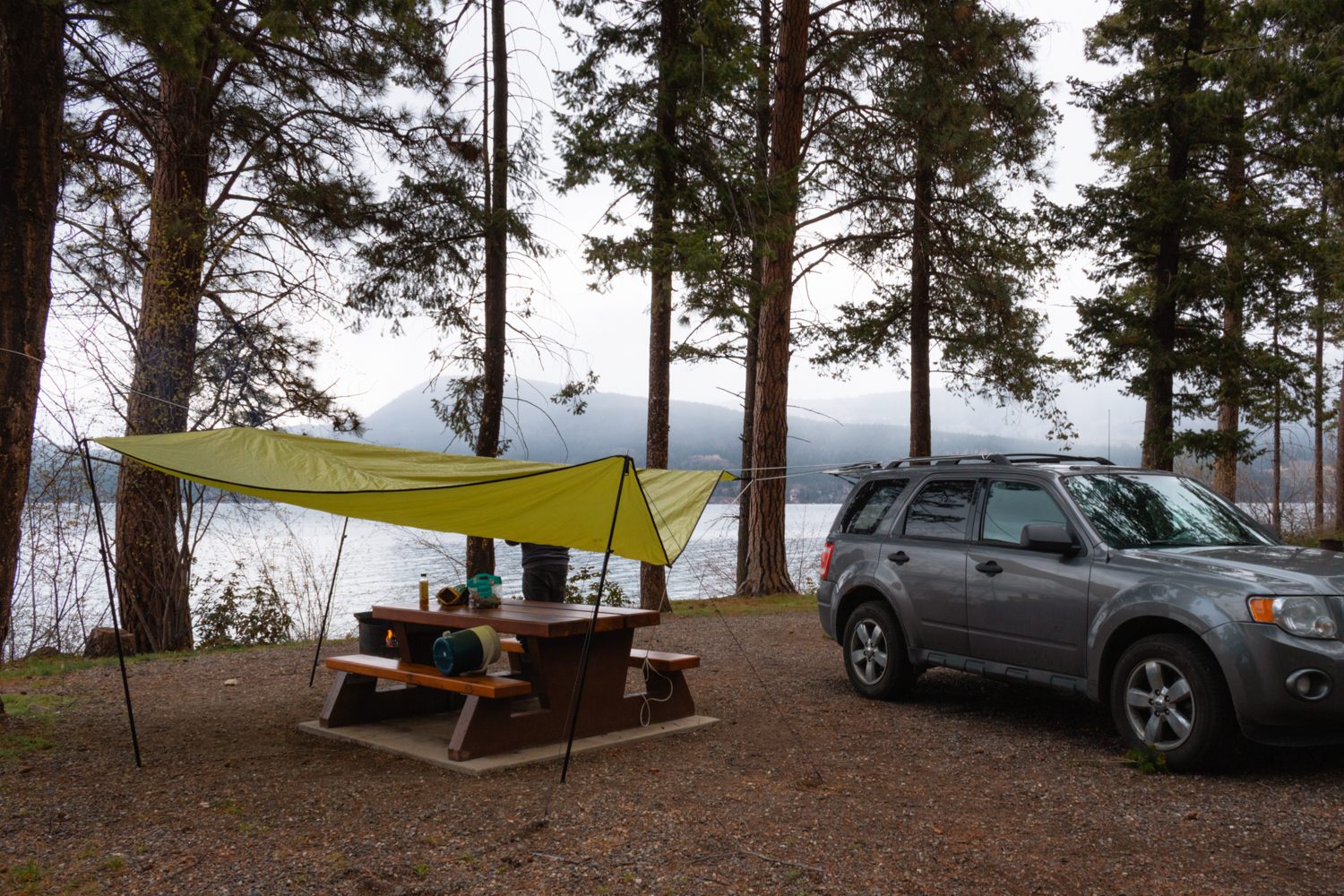
Prepare for Camping in the Rain
Being prepared for a rainy camping trip starts long before ever setting foot in your campsite.
If the first time you’re thinking about the rain is as you’re setting up your tent, heavily side-eyeing the grey clouds and frantically checking your weather app, then you’re probably in for a miserable camping experience.
Luckily, since you’re here learning about all the tips for a rainy camping trip, that’s not going to happen to you!
Check the Forecast
First and foremost, always check the weather forecast in the days leading up to your camping trip. Check back often and use different apps because the forecast can change quickly, especially in mountainous areas where the weather is unpredictable.
Luckily, we live in a world where the forecast is literally at our fingertips. The Weather Network, WeatherBug®, and AccuWeather are great apps for watching the weather.
Even if the weather forecast is sunny with no rain, it’s still a good idea to bring rain gear. The forecast isn’t always accurate and being totally unprepared for camping in the rain is a sure-fire way to have a terrible experience — especially if it could have been avoided by bringing a few tarps!
If you notice the forecast taking a turn for the worse with severe thunderstorms or other weather warnings, consider rescheduling your camping trip.
There’s a big difference between camping in minor rain and dangerous conditions.
While you’re camping, keep an eye out for telltale signs of an incoming storm: eerie stillness, increasing winds, or pets/wildlife acting weird. Prepare accordingly by securing all of your gear and bringing it under shelter.
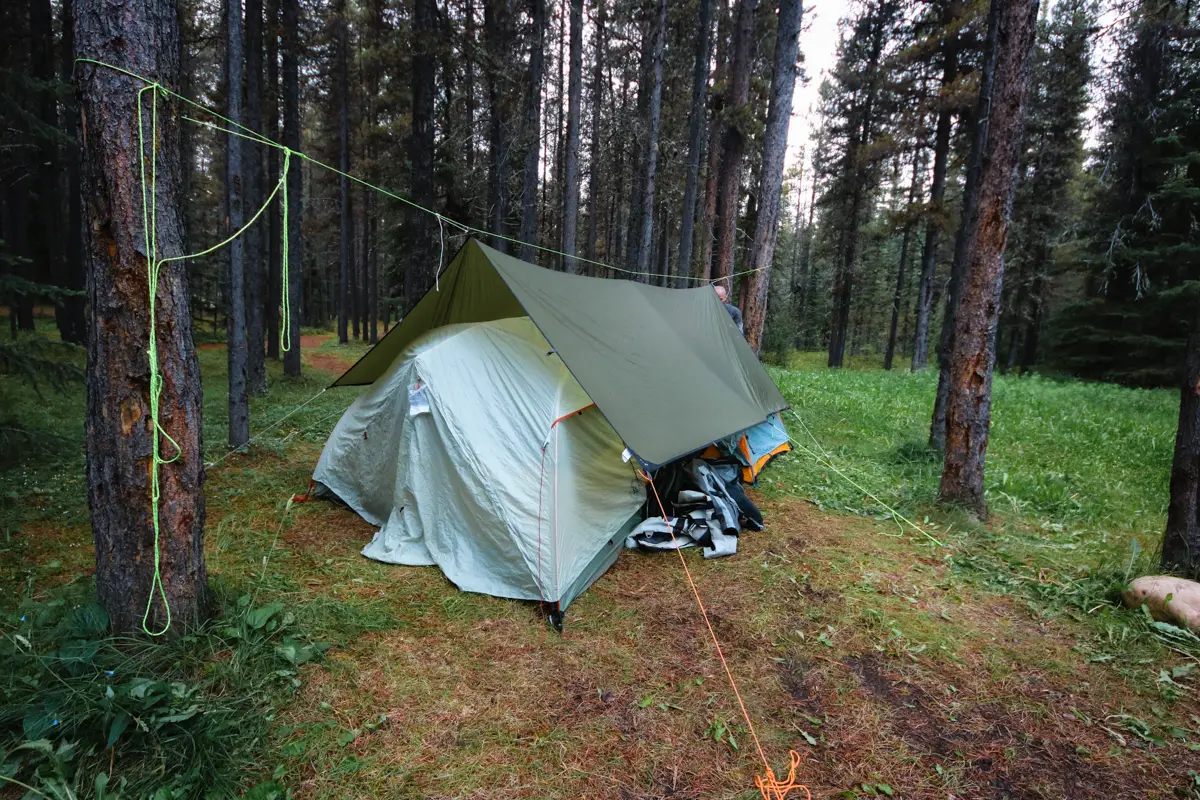
Pack Plenty of Tarps
Tarps are your best friend when you’re camping in the rain. You’ll use them all over your campsite to keep everything dry. Ensure your tarp is waterproof; not all are.
Camping tarps, as opposed to regular tarps, are a great investment. You don’t need camping-specific tarps, but lightweight camping tarps take up very little room and perform exceptionally well — both for keeping you dry on rainy days and providing shade on hot days.
With a lightweight camping tarp, use paracord and some trees to easily create a covered, dry area. You can also use a regular tarp to do this, it’ll just be a little harder.
Camping tarp options:
- Unigear camping tarp
- Amazon Basics camping tarp
- Extra tent stakes (for securing the tarp to the ground)
- Adjustable tarp poles
- Awning for SU

Waterproof Your Tent
It might seem obvious, but your tent needs to be waterproof if you’re going to camp in the rain!
There are things you can do if your tent isn’t waterproof, but it’s never going to be as good as a waterproof tent that actually protects you against the elements.
PS: Check out these great waterproof tents for when you’re camping in the rain with your family.
The following tips won’t magically turn an inexpensive non-waterproof tent into a completely waterproof one, but they can dramatically increase your tent’s water resistance for a regular camping season (if done correctly).
Always test your tent after waterproofing it and before heading out so you know if it worked.
Even with a waterproof tent, it’s a good idea to give your tent some extra protection by waterproofing it more. You don’t have to do this every time, but it’s part of maintaining your gear and keeping it in good condition. Do this at home before you head out.
How To Waterproof a Tent
Without going into a ton of detail, you’ll spray your tent with waterproofing spray and seal the seams with a seam sealer.
You’ll also need to wash your tent beforehand and follow the product’s instructions to ensure it’s applied correctly.
Even if you have a brand new tent that says it’s waterproof, it’s still a good idea to waterproof it yourself to be 100% sure.
Waterproofing tent options:
- Nikwax Tent and Gear SolarProof Waterproofing Spray
- Kiwi – Camp Dry Heavy Duty Water Repellent
- GEAR AID – Seam Grip TF Tent Fabric Sealer
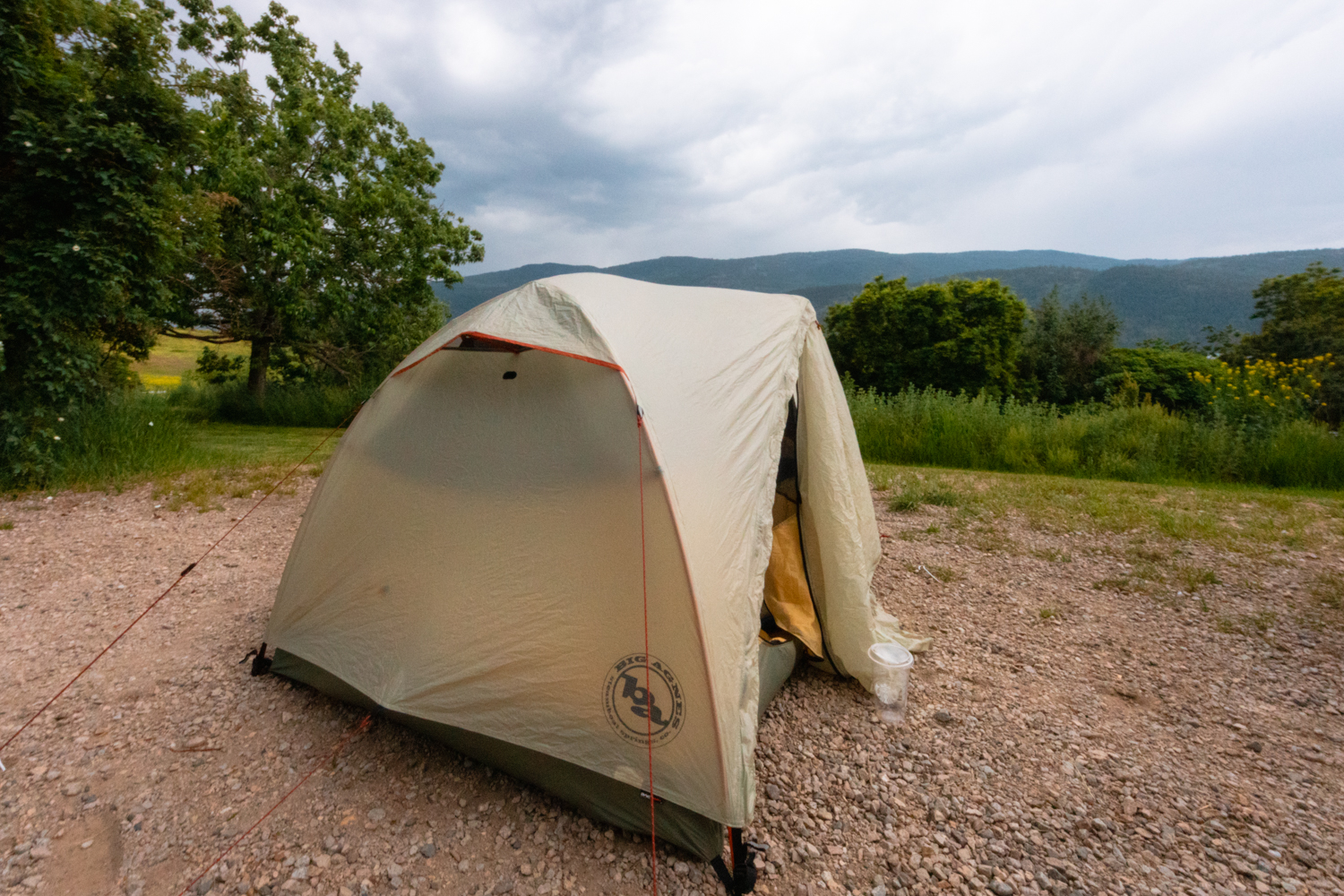
Pack the Right Clothing & Layer for the Rain
Choosing the right clothing and layering properly will make all of the difference when you’re camping in the rain.
If you’re shivering and can’t get dry or warm, you’re in for an absolutely terrible camping experience. You also won’t be able to keep your body temperature in check which can lead to hypothermia (which can be life-threatening in the outdoors).
With that in mind, what exactly is the “right clothing” for a rainy camping trip? And how should you layer it?
Best Fabrics for Camping in the Rain
Before we get into specifics about layering and clothing recommendations, it’s important to understand why you’re packing specific clothes for your rainy adventure.
Unlike your regular wardrobe, the type of material your camping clothing is made of makes a world of difference — it can make or break your trip and even save your life.
How to Layer Clothing for Rainy Camping Days
Now that you know the materials to bring when you’re packing for your rainy camping trip, let’s dive into how to use the gear properly. After all, the best way to have an enjoyable experience camping in the rain is to stay warm and dry in the first place.
Just like you’d layer up for a snowy adventure, it’s equally important to layer properly when it’s raining. At the very least, you’ll need water-resistant boots, a waterproof jacket, and water-resistant pants. But there’s more to it than that, so let’s dive in.
Additional Clothing for Rainy Days
Once you have your layers figured out, you’re not done packing. There’s plenty of other gear to pack to make your rainy camping experience more enjoyable.
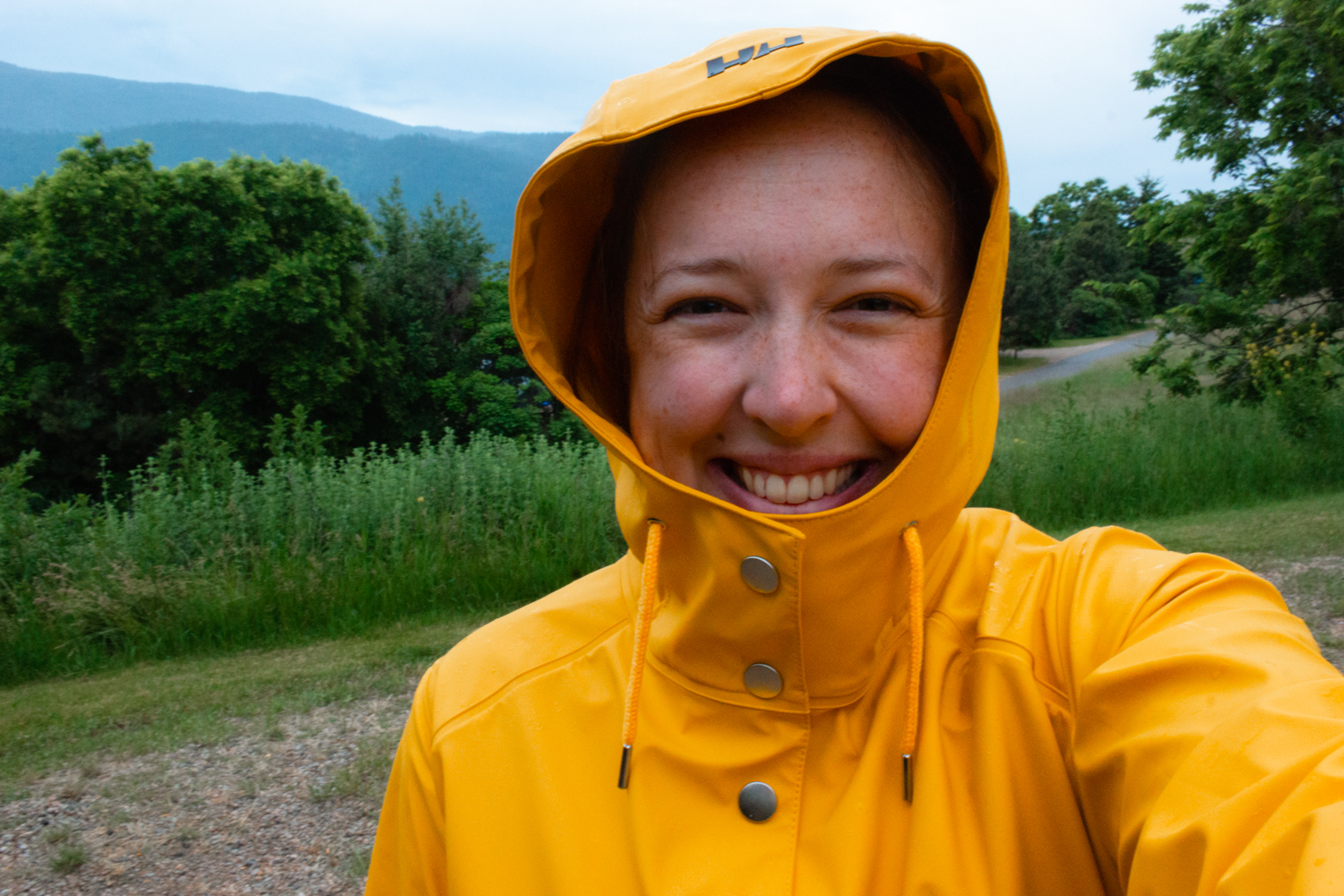
Pack Your Gear Properly
You can have the best technical gear in the world and layer like a pro, but it won’t do any good if your gear’s soaking wet in the first place.
So how do you keep your gear dry when you’re camping in the rain? By packing properly before you ever lay eyes on your campsite.
It’s best to pack everything in a waterproof bag or container when you’re camping in the rain, but it’s especially important for key gear like your sleeping bag, extra clothes, electronics, and emergency/medical supplies.
Even inside a “waterproof” tent, keep your gear packed properly.
When you’re camping and it looks like it’s going to rain, repack your gear (even the waterproof things) and bring everything into a dry spot ASAP.

How to Set Up Your Campsite for the Rain
This next part is mainly for tenters setting up their campsite for the rain because it’s easy for RVers to escape the rain.
When you’re tenting, choosing the right campsite and tent location is a vital step in making sure you’ll have a good experience camping in the rain.

Arrange the Inside of Your Tent
Once your tent’s pitched, it’s time to set up the inside of your tent properly. Most importantly, don’t let gear touch the tent walls.
Condensation often accumulates on tent walls and water seeps through easier if something’s touching the walls. This is why it’s helpful to have an inner tarp to keep your sleeping bag and things from touching the walls.
Keep wet gear, including shoes and clothes, outside. Don’t bring anything wet into your tent.
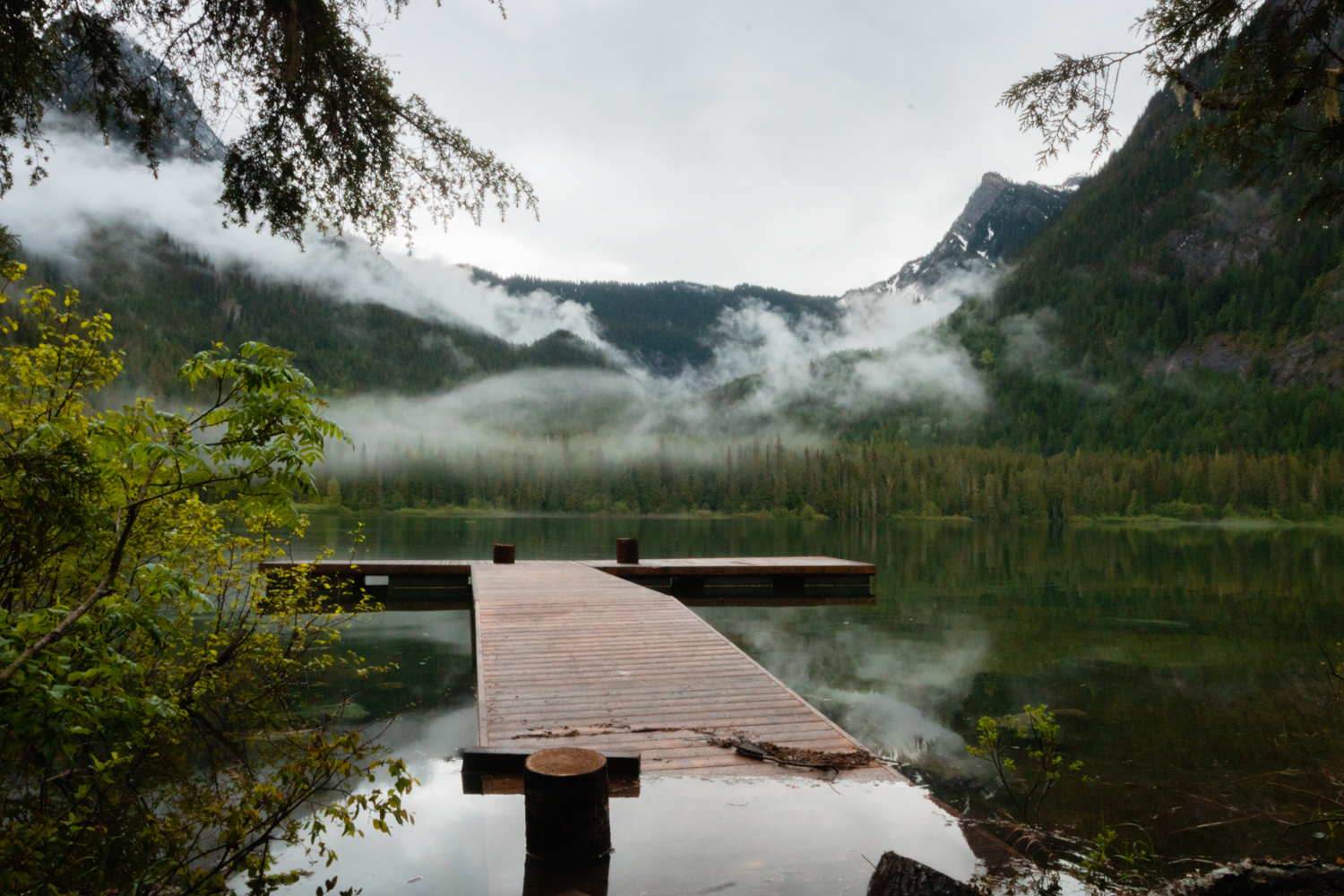
Camping in the Rain Activities
When it’s raining during a camping trip, it’s easy to get down in the dumps because you can’t (or won’t) go swimming or hiking — or whatever your regular camping activities are. Instead of getting annoyed because you’re bored, come prepared with plenty of fun rainy day activities!
Whether you’re camping with young kids, adult family or friends, these are fun camping activities. It’s all about being ready and kicking boredom to the curb!
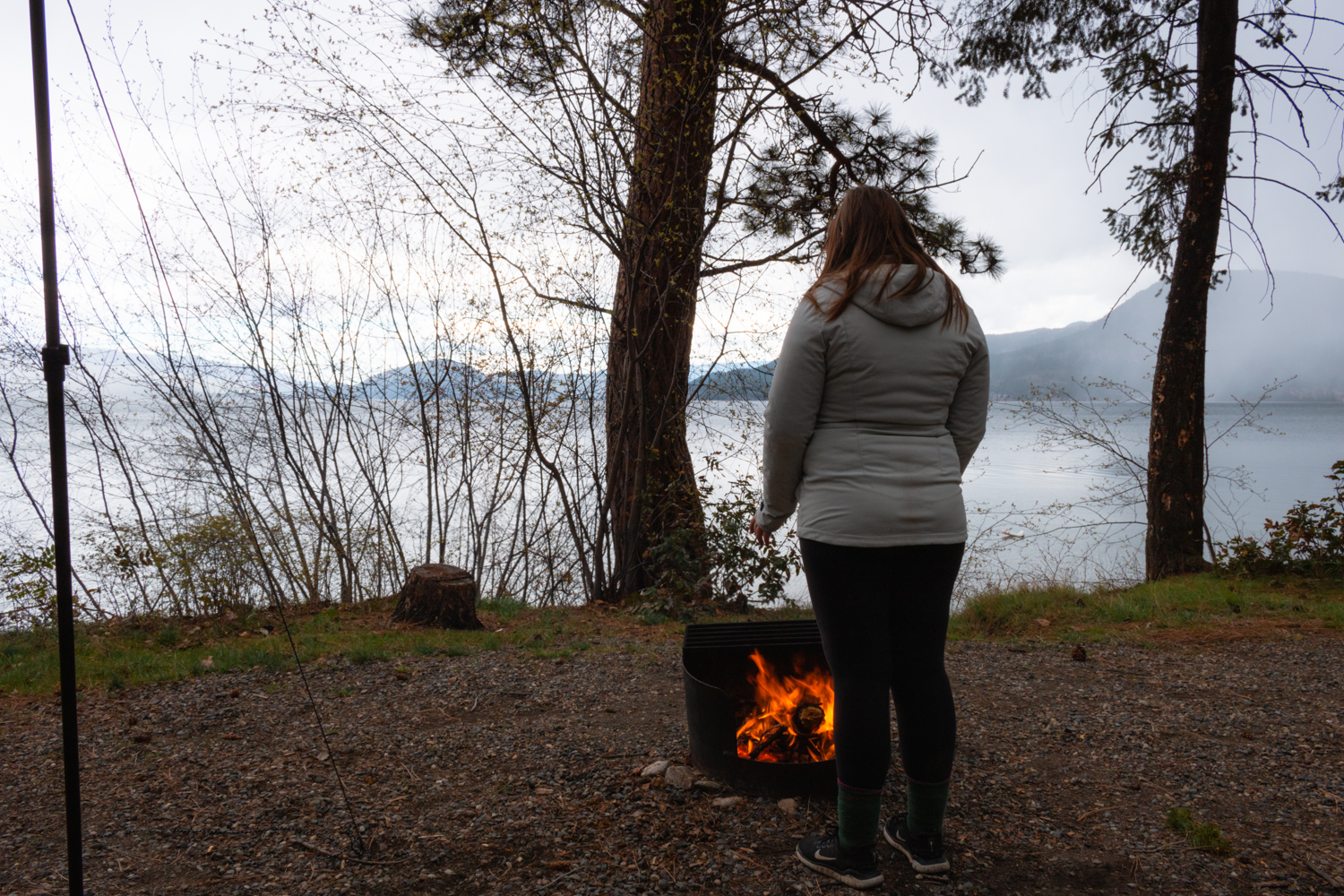
How to Build a Campfire in the Rain
Starting a campfire and keeping it going can be difficult on the best of days, but doing that in the rain? Not a lot of fun.
Even though starting a campfire in the rain with potentially wet wood might seem like a nightmare, it’s not an impossible task. You just need to be prepared, bring the right tools, and know what to do. Once the fire’s going, it’s actually pretty easy to keep going.
(Or bring a portable propane fire. They’re easy to start and are usually allowed during fire bans.)
Basic campfire gear:
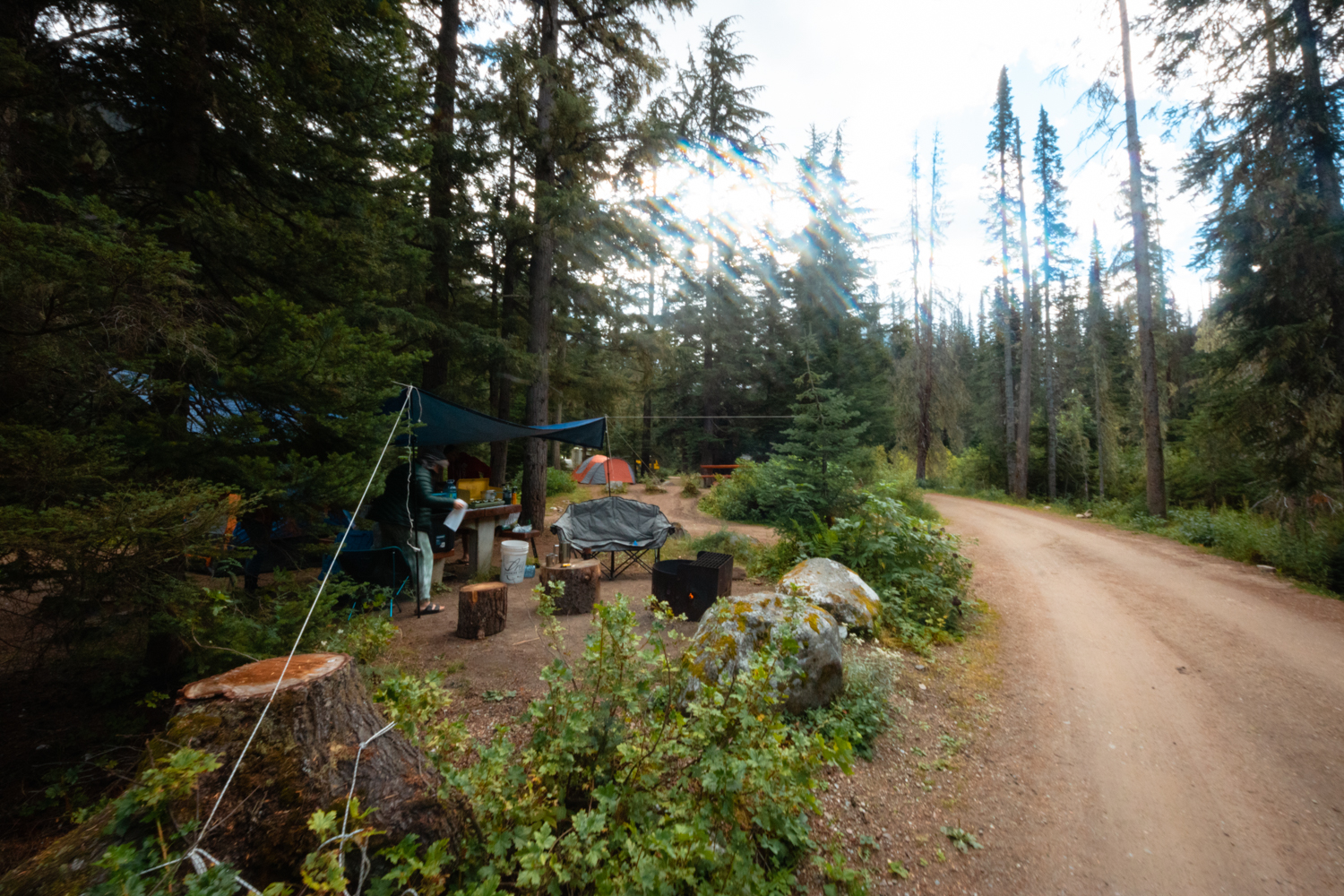
Create an Outdoor Living Room
Once you’ve set up your tent, it’s time to make a covered shelter where you can stay out of the rain — essentially, an outdoor living room.
Use extra tarps and paracord or a popup canopy to create a dry sanctuary. This goes a long way in actually enjoying camping in the rain.
If possible, it’s best to connect the tarp above your tent with your outdoor living room so you can easily move between the two without getting wet.
Gear for a cozy rain shelter:
- String lights
- Lanterns
- Citronella candles
- Comfy lounging chair
- Lightweight portable chair
- Heated chair cushions
- Warm outdoor blankets
- Insulated chair cover
- Chair cup holders
- Rocking or ball feet, headrest, ground sheet, and other chair accessories
Create Some Ambience
What do you love most about your living room at home? I’ll bet it’s cozy. Why shouldn’t you bring this coziness to your outdoor living room, especially when it’s raining?
Luckily, it’s pretty easy to deck out your rain shelter. Here are some tips to make the most of your outdoor shelter when you’re camping in the rain:
Set Up a Camping Kitchen
Cooking on a campfire is fun, but campfires can be unreliable when you’re camping in the rain.
Maybe you can’t find enough dry firewood, can’t keep it going, or the fire just won’t light. Whatever the reason, it’s always a good idea to have a backup plan so you don’t go hungry.
Instead of relying on a campfire to cook at, use a propane stove when it’s raining — and bring extra propane. There are lots of different camping stoves ranging from tiny, lightweight backpacking stoves all the way to semi-barbeques.
If you have the room, set up a dedicated shelter for cooking. This makes cooking in the rain a hell of a lot more enjoyable. You can lay out all of your gear and cook up a gourmet meal.
Whatever you do, never cook inside your tent! You could burn it down or get carbon monoxide poisoning. You can sit at the entrance of your tent and cook as long as the stove is outside.
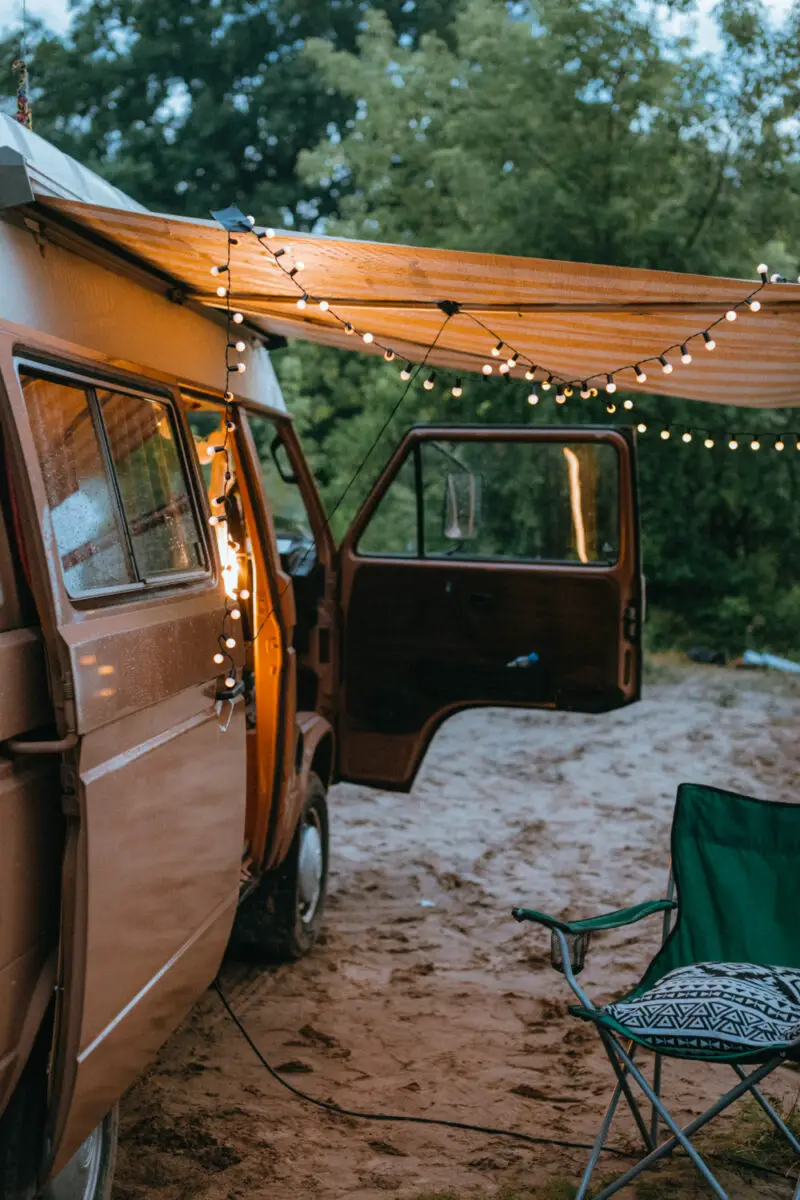
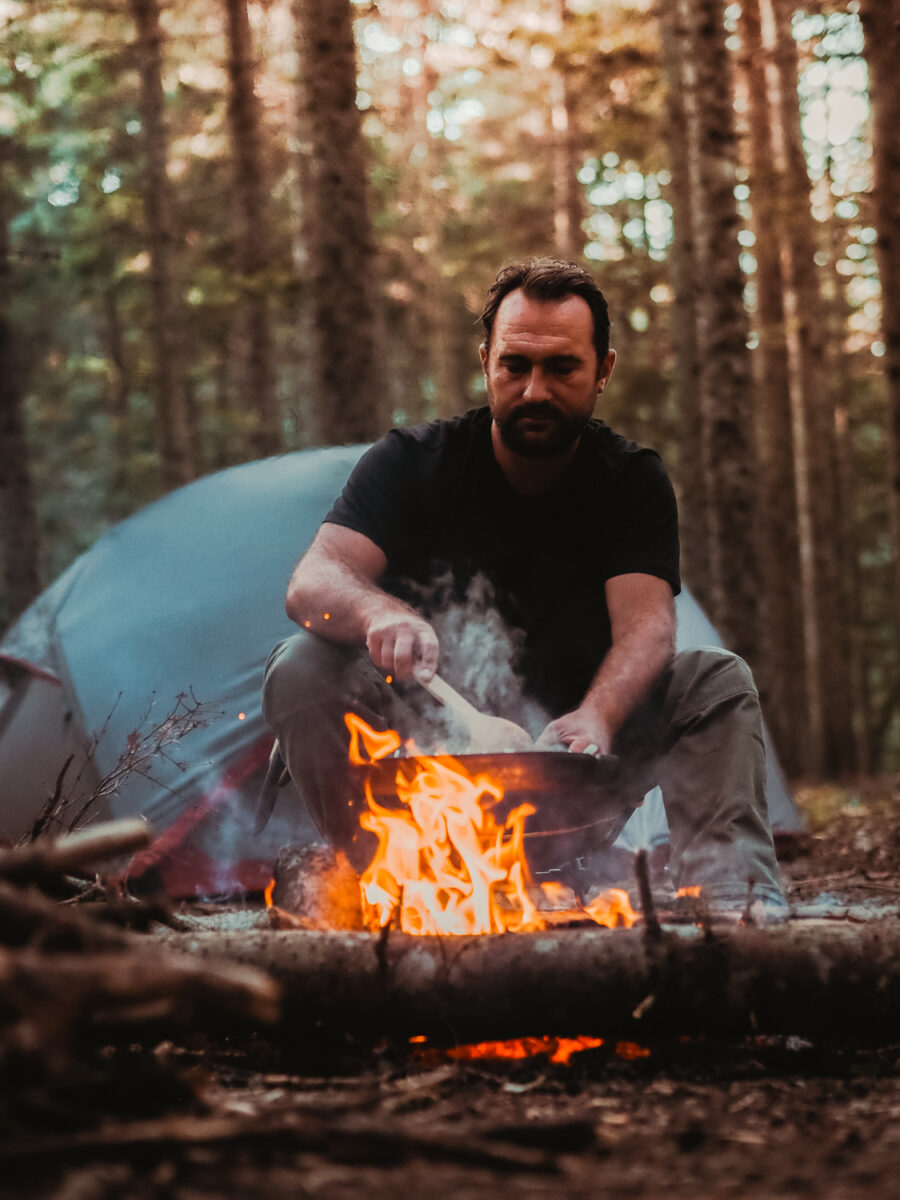
What To Do If You Get Wet
If you get wet while camping in the rain, don’t panic. Just get out of your wet clothes ASAP and dry off. If you can’t get warm, strip down and get into your dry sleeping bag to warm up. Use handwarmers to quickly warm up the bag.
Once you’ve warmed up, layer in dry clothes and keep using the hand warmers. Build a fire and sit close to it, bundled up in warm blankets.
Hang your wet clothes up on a clotheslines. If it’s been raining a lot, it’ll take a while for your clothes to dry. If you have access to electricity, use a shoe dryer to dry your clothes faster.
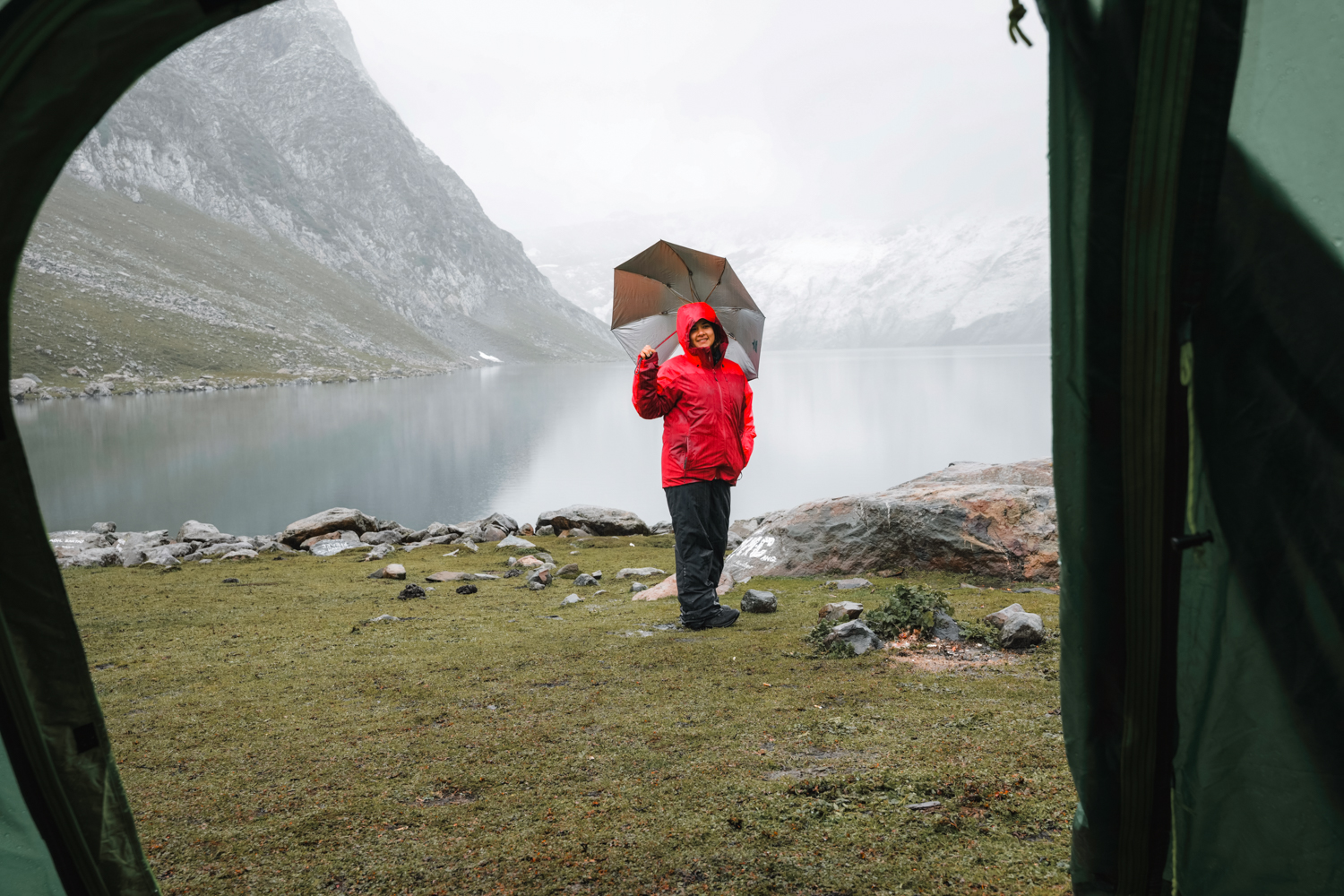
What To Do After Camping in the Rain
You’ve survived camping in the rain, realized it wasn’t as bad as you imagined, and are heading home — what now? There’s still more work ahead.
It’s very important to properly care for your gear after camping in the rain so it’s still in tip-top shape for your next outdoor adventure.
And Remember… Rain Isn’t the End of the World!
Camping in the rain might seem daunting or like a terrible idea, but if you go in with a good attitude and plenty of knowledge, you can enjoy the unique experience.
It’s an adventure and an impressive skill that your old, inexperienced self would be proud of.
You’ll come out with stories and knowledge you can share with fellow campers. You’ll know how to stay dry during a downpour, how to start a fire in the rain, and even what gear’s the most important. You might even learn a thing or two about yourself.
